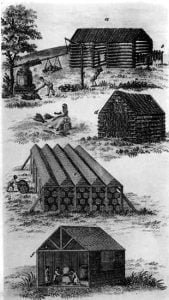Yuchi Farming
Although the Yuchi of today are cultivators of the soil, as they were in former times, the manner and method of agriculture has undergone many radical changes since the first contact with Europeans. The modification of this branch of their culture has been so thorough that we can only construct, from survivals and tradition, an idea of its former state. The villages were surrounded by fertile spaces, cleared of timber and other vegetation by burning in dry springtime. These spaces were converted into garden patches where vegetables were sown and tended as they grew up, by a daily but irregularly-timed … Read more



